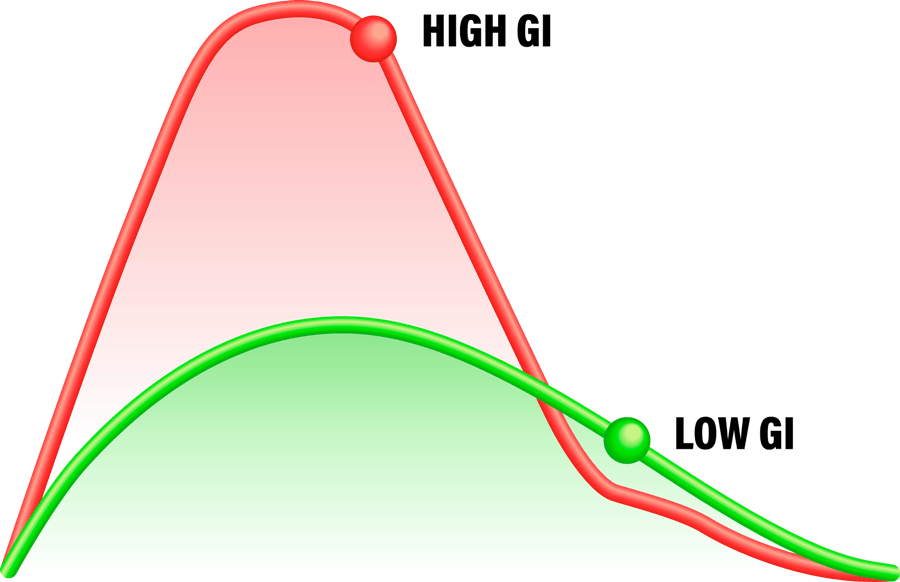What is the Glycemic Index?

The glycemic index (GI) is a physiologically based measure of the effect of carbohydrates on our blood glucose levels (BGL). When carbohydrates are digested, absorbed and metabolised slowly it gives us sustained energy and helps us maintain a healthy weight. Tested carbohydrate foods are given a score on a scale of 1-100. Foods with a score of 55 and under are low GI.

How low GI diet impacts you?
A low GI diet can help you lose weight and keep it off. A low GI diet resulted in modest but significant reductions in body weight, BMI and cholesterol.People with overweight or obese lost more weight and had more fat profile improvements on a low GI diet vs a control diet.
A low GI diet can prevent weight regain of half a kilo per year after weight loss. This dietary pattern is easier for people to adhere to long-term.
A low GI diet can reduce the risk of cardiovascular disease. A high GI diet is associated with increased risk of a major cardiovascular event as well as an increased risk of death from any cause.A high GI diet is likely causal of heart disease. A low GI diet can help lower cholesterol levels.
A low GI diet can prevent and manage Type 2 diabetes, gestational diabetes and pre-diabetes. A low GI diet can reduce the risk of Type 2 diabetes by up to 90%. For every 5 GI points, the risk of developing diabetes increased 8%. A low GI diet helps people with diabetes reduce their HbA1c by 0.5% points, decreasing the risk of common diabetic complications by 20%. The highest GI and GL diets had an increased risk of developing gestational diabetes, compared to those with the lowest GI and GL diets.
A low GI diet can help improve symptoms of. A low GI diet can help improve insulin levels. A low GI diet can address body weight, even a small amount of weight loss can improve PCOS symptoms.
There is emerging evidence that a low GI diet is linked to a reduced risk of certain cancers. A high GI diet was found to be positively associated with the risk of prostate cancer. A high GI diet was associated with an increased incidence of colorectal, and possibly bladder and kidney cancers. Women that consume a high GI diet, compared with women that consumed a low GI diet had a 5-6% increase in breast cancer risk.
What about Glycemic Load?
Glycemic Load (GL) serves as a comprehensive indicator, taking into account both the quality and quantity of carbohydrates present in a food or beverage. Glycemic Index (GI) primarily assesses the quality of carbohydrates. Therefore, an effective strategy for managing your Glycemic Load is to opt for foods with the lowest GI within a specific food group or category while also paying attention to portion sizes.

